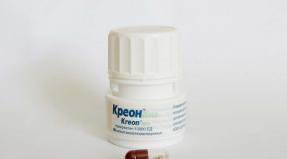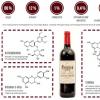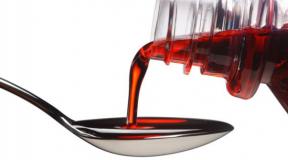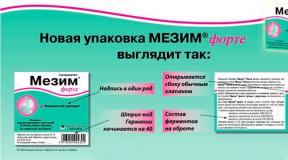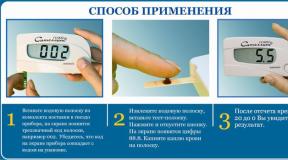Insulin resistance: symptoms, treatment, tests
Sometimes tissues in the body respond inadequately to the presence and effects of insulin. In such cases, it is said that there is insulin resistance (metabolic syndrome). A negative response to insulin can occur in response to one's own hormone coming from the pancreas or injected. Insulin resistance is a phenomenon with dangerous consequences. Type 2 diabetes mellitus, atherosclerosis, and cardiovascular disorders develop.
Insulin regulates the body's metabolism and certain processes, such as cell growth and reproduction. The hormone is involved in DNA synthesis and gene activity.
It also plays the following roles in the body.
- Contributes to the nutrition of muscle, liver and fat cells with glucose. With the help of this hormone, cells capture it and amino acids.
- Suppresses the breakdown of adipose tissue, prevents the ingress of fatty acids into the blood. When the insulin in the body is exceeded, it is difficult to burn fat (lose weight).
- Helps to store glucose in the liver and inhibits its transformation, entry into the blood.
- Prevents self-destruction of cells.
With the loss of sensitivity to insulin, carbohydrate metabolism, metabolism in adipose and protein tissues is disturbed. Vessels undergo changes towards atherosclerosis, as endothelial cells cling to the inner walls, narrowing the gaps for blood flow.
Causes of the disease
It is believed that the cause of insulin resistance is in the genes, that is, the disease is hereditary. When experimenting on mice, it turned out that individuals with insulin resistance, moreover, found at the genetic level, experience prolonged hunger. In people who do not suffer from hunger, this property can lead to obesity, diabetes and hypertension. Further studies show the presence of genetic defects in diabetic patients. But predisposition does not mean the mandatory development of the disease in the case of a correct lifestyle. Risk factors include overnutrition, consumption of flour products and sugar. Especially if you add to this insufficient motor and physical activity.
When diagnosing and treating, an indicator of tissue sensitivity to insulin is important: muscle, fat, liver cells. Before the symptoms of hereditary diabetes appear, a decrease in the sensitivity of these tissues begins. Over the years, the pancreas fails, being overloaded. The action of insulin weakens and this is already a symptom of type 2 diabetes. First, the pancreas increases insulin production to compensate for insulin resistance. But at the next stages of the disease, harmful substances from the breakdown of fat enter the liver and form particles (lipoproteins) there that are deposited on the walls of blood vessels. atherosclerosis develops. At the same time, the liver releases excess glucose into the blood.
Insulin resistance also occurs against the background of ovarian diseases, impaired renal function, and infections. It can manifest itself during pregnancy, and after this period disappear, appears among age-related changes, being directly dependent on nutrition and lifestyle.
About symptoms
The first symptoms are revealed from the state of health and external signs in a person. But metabolic disorders can also show tests. If there is obesity in the waist or hypertension, symptoms of insulin resistance can be assumed. A blood test at the same time shows a violation of the norm of cholesterol, protein can be detected in the urine. Tests alone may not always be the basis for diagnosis. Insulin in the blood can be more or less in a short period of time, which does not indicate a violation.
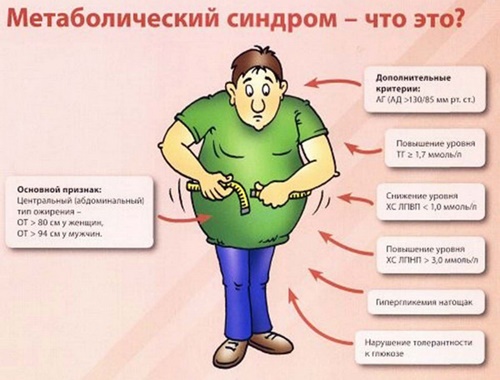
When there is insulin resistance in tissues, the pancreas increases insulin production. In the analysis, the content of insulin begins to exceed the norm (2 - 28 mcU / ml) of the hormone. But if the glucose level with elevated insulin is normal, then such a sign still portends type 2 diabetes. Overloaded beta cells that produce insulin, over time, cease to cope, produce less and less of the hormone that prevents sugar from entering the bloodstream. The result is a diagnosis of diabetes. With an increase in blood sugar, insulin resistance increases more and more. The activity of beta cells is suppressed, glucose toxicity occurs.
Diagnosis of insulin resistance
For a more accurate diagnosis, an analysis is performed with a long-term (from 4 to 6 hours) administration of insulin with glucose into a vein. But usually this method is not practiced, only tests are done on an empty stomach. If the insulin resistance index is elevated, there is cause for concern. The index is called homa-ir and is calculated using a formula that includes insulin and blood glucose levels. These levels are elevated in case of pathology.
How to take tests correctly?
How to get tested for insulin resistance? Need to spend a little more time in the lab than usual. On an empty stomach, blood is donated, glucose and insulin levels are checked. Then it is proposed to drink glucose dissolved in a glass of water, 75 grams. After 1 hour, we repeat the donation of blood to check the glucose content. And after another 1 hour, we take a blood test for insulin and glucose. The indicators fit into the formula and the calculation is done.
Diagnosis by symptoms
Loss of tissue sensitivity to insulin is often not detected until there are clear signs of metabolic pathology. Almost all tissues need glucose and insulin, which helps to absorb it. The lens of the eye and the brain are an exception. They metabolize glucose without the pancreatic hormone insulin. Recognition of the disease is carried out in the identification of several mechanisms of loss of sensitivity to insulin. This:
- the secretion of the wrong insulin by the gland, which cannot act normally;
- a decrease in the number of receptors in tissues that perceive insulin;
- cellular disorders after the perception of insulin by the receptor.
For diagnosis by symptoms, visible signs of the disease are identified and deterioration in well-being is taken into account. For example, this is black acanthosis - the appearance of dark spots on the elbows, ankles, back of the head. Insulin resistance is often detected as a concomitant disease in type 2 diabetes, hypertension.

Treatment Methods
If a syndrome of metabolic disorders is detected, treatment should be started as soon as possible. With insulin resistance, the risk of not only severe diabetes is high, but also heart attack and stroke. After all, insulin directly affects the condition of the walls of blood vessels. With an increase in insulin in the blood, the appearance of atherosclerotic plaques progresses.
Treatment of insulin resistance before signs of diabetes appear is best done through diet. The content of carbohydrates in meals should be reduced. From the first days of the normalization of nutrition, the state of health improves. When insulin resistance occurs, the diet must be followed for life. After a period of about 2 months of treatment with a diet, useful cholesterol increases in the analyzes and harmful cholesterol decreases. Other indicators are back to normal.
Other than diet, there is currently no way to really cure insulin resistance. Although geneticists are looking for a way to solve the problem. However, "treatment with food" can be very effective, as it normalizes the lifestyle, eliminates disease factors. Together with a low-carbohydrate diet, with the exception of sweets and starchy foods, the drug metformin tablets is used as an adjunct. Actos medication is almost never used. When prescribing the complex, it is necessary to consult a doctor who can prescribe individual nutrition.
Treatment with medicinal plants is also recommended for insulin resistance, such as blueberries. They should be eaten as often as possible, as they increase insulin sensitivity, reduce blood sugar, and reduce the amount of toxins.


